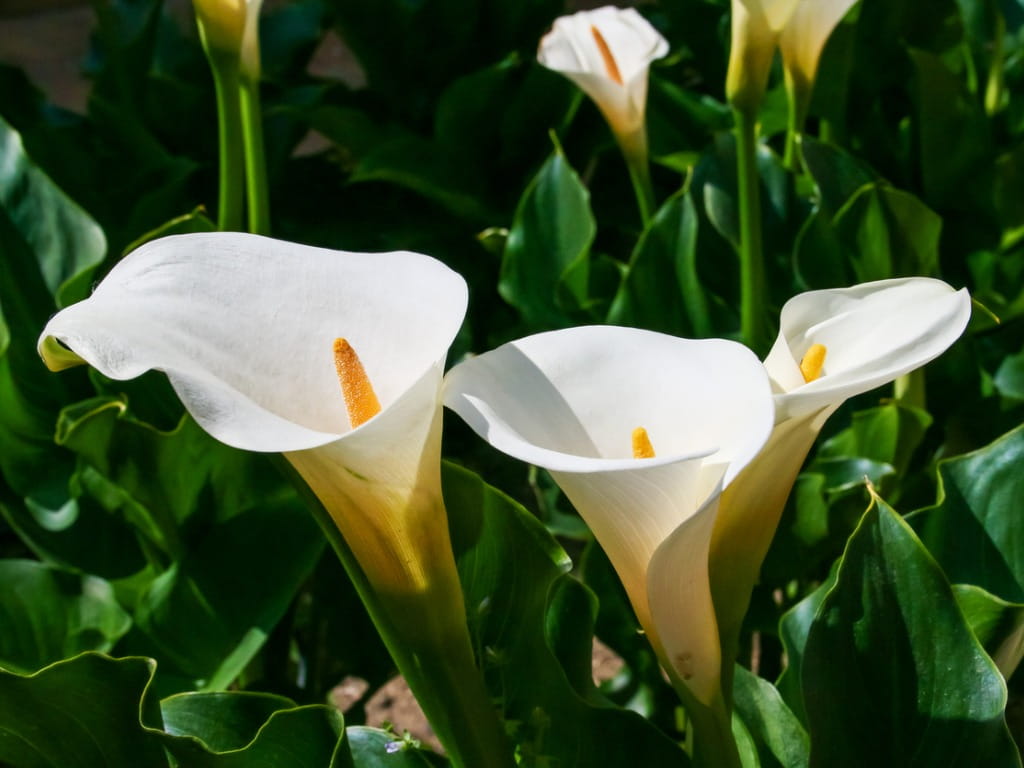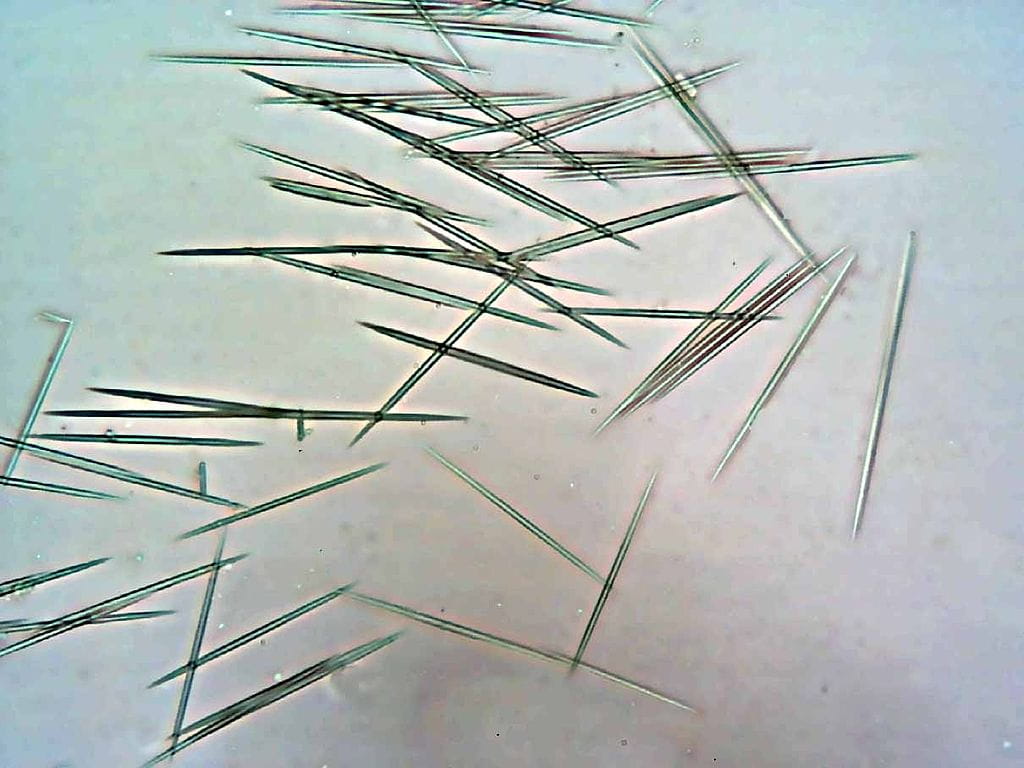My Child Ate a Piece of a Calla Lily!

The Bottom Line
Calla lilies are common household and garden plants and are frequently ingested by curious children. Calla lilies release microscopic needle-like crystals, resulting in immediate burning, pain and irritation. Severe or life-threatening symptoms are rare.

The Full Story
Callas belong to the genus of plants scientifically known as Zantedeschia. They have a distinctive broad-shaped petal, called a spathe, that looks like the flaring end of a trumpet (hence one of its common names, trumpet lily). The spathe wraps around a structure called a spadix, which looks like a finger. The spadix is actually a small cluster of flowers. Calla lilies come in many different colors. The classic white is probably the one most people think of when they think of calla lilies. Other common names for them are arum lily and pig lily.
What happens when calla lilies are ingested?
All parts of the calla lily plant contain calcium oxalate crystals. These are microscopic needle-like (yes, needle) crystals that are released when the plant is handled, chewed, bitten, etc. Naturally, pain is the main symptom that would occur when these needle-like crystals are released inside the mouth. Painful burning of the lips, mouth/gums, tongue, and throat occurs immediately. Sometimes, drooling can occur because it’s painful to swallow. Other times, it can cause nausea and vomiting and hoarseness of the voice. In addition to the calcium oxalate crystals, enzymes that break down protein are also released and contribute to an inflammatory response. Although life-threatening symptoms are rare, severe irritation of the throat and tongue can result in swelling, which then threatens to block the windpipe.
The same effect can occur on the skin, or in the eyes. For instance, if the sap gets in the eyes, it can result in immediate pain, burning, tearing, swelling, and light sensitivity.
The calcium oxalate crystals in calla lilies do not break down in the body, so whole-body poisoning would not occur (unless an unusually large amount is ingested). The symptoms are limited to just the site of contact, like the mouth or eyes. Furthermore, not every exposed individual will develop symptoms.
What should you do if someone eats part of a calla lily plant?
- Do not attempt to induce vomiting.
- Try to gently remove any plant parts remaining in the mouth and wipe the tongue with a wet cloth. Gently rinse lips with water.
- Check the webPOISONCONTROL® online tool or call Poison Control at 1-800-222-1222 for guidance.
- Giving milk or another cool and creamy snack like yogurt, ice cream, or popsicle can help relieve the symptoms. Do not give anything to eat or drink if there is swelling of the tongue or throat or if the person is having difficulty breathing.
What should you do for an eye exposure or if skin irritation develops after handling a calla lily plant?
Immediately rinse the eyes and skin gently with room temperature water. Reach out to Poison Control to find out what to do. Get an immediate personalized recommendation online or call 1-800-222-1222. Both options are free, confidential, and available 24 hours a day.
Serkalem Mekonnen, RN, BSN, MPH
Certified Specialist in Poison Information
Poisoned?
Call 1-800-222-1222 or
Prevention Tips
- Store houseplants out of reach of children and pets.
- When outdoors, closely supervise children and pets.
- After gardening or engaging in outdoor activities, wash hands thoroughly with soap and water.
- Have your indoor and outdoor plants correctly identified by a knowledgeable expert.
This Really Happened
A 2-year-old boy bit off two small segments of a calla lily plant and complained of burning in his mouth. His father called Poison Control for advice. There were no other symptoms at the time. Poison Control advised the father to rinse the boy’s mouth well and to offer something cold and creamy to eat, like ice cream or milk. Upon follow-up the next day, the boy was well. The burning in his mouth resolved after drinking fluids, and no other symptoms or problems occurred.For More Information
Soloway RAG. Skin problems from outdoor plants. Washington: The Poison Post [cited 2022 Feb 27].
For Pet Parents
Calla lily. Bloomington (MN): Pet Poison Helpline [cited 2022 Feb 26].
Oxylates (insoluble). Bloomington (MN): Pet Poison Helpline [cited 2022 Feb 26}.
References
Zantedeschia. Raleigh (NC): NC Cooperative Extension [cited 2022 Feb 27].
Poisoned?
Call 1-800-222-1222 or
Prevention Tips
- Store houseplants out of reach of children and pets.
- When outdoors, closely supervise children and pets.
- After gardening or engaging in outdoor activities, wash hands thoroughly with soap and water.
- Have your indoor and outdoor plants correctly identified by a knowledgeable expert.
